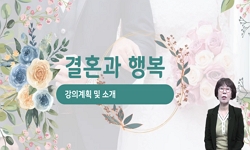이 논문은 삼대록계 국문장편소설에서 추모를 지닌 여성 인물에 대한 연구로, 작품 속에서 그녀들의 추모가 의미하는 바를 고찰하였다. 고전소설의 주인공들은 대개 미남 미녀들이다. 남녀...
http://chineseinput.net/에서 pinyin(병음)방식으로 중국어를 변환할 수 있습니다.
변환된 중국어를 복사하여 사용하시면 됩니다.
- 中文 을 입력하시려면 zhongwen을 입력하시고 space를누르시면됩니다.
- 北京 을 입력하시려면 beijing을 입력하시고 space를 누르시면 됩니다.
 OpenAccess
OpenAccess
삼대록계 국문장편소설에 나타난 추모(醜貌) 연구 : <유씨삼대록>의 순씨와 <임씨삼대록>의 목지란을 중심으로 = A Study on the Meaning of Ugliness in Woman Characters in Three-Generation Stories of the Chosun Dynasty -centering on Sunssi of Yussisamdaerok and Mokjiran of Imssisamdaerok
한글로보기https://www.riss.kr/link?id=A100182602
-
저자
조혜란 (경희대학교)
- 발행기관
- 학술지명
- 권호사항
-
발행연도
2009
-
작성언어
-
-
주제어
미추 ; 추모 ; 유씨삼대록 ; 임씨삼대록 ; 순씨 ; 목지란 ; 몰취향 ; 본능 ; 교양 ; 차별 ; 타자화 ; 문화자본 ; 혼인 ; 결혼 ; 후염 ; 임씨 ; 등씨 ; 가문소설 ; beauty & Ugliness ; ugly ; Sunssi ; Mokjiran ; Yussisamdaerok ; Imssisamdaerok ; distinction ; cultural capital ; culture ; othering ; family stories of the Chosun dynasty ; classic river-novels
-
KDC
810
-
등재정보
KCI등재
-
자료형태
학술저널
- 발행기관 URL
-
수록면
483-518(36쪽)
- DOI식별코드
- 제공처
-
0
상세조회 -
0
다운로드
부가정보
국문 초록 (Abstract)
이 논문은 삼대록계 국문장편소설에서 추모를 지닌 여성 인물에 대한 연구로, 작품 속에서 그녀들의 추모가 의미하는 바를 고찰하였다. 고전소설의 주인공들은 대개 미남 미녀들이다. 남녀를 막론하고 추한 용모를 지닌 인물은 드물다. 그런데 낙선재에 소장되어 있던 가문소설의 존재가 세상에 알려지고 연구가 진행됨에 따라 고전소설의 다른 하위장르들에 비해 가문소설의 경우에는 추모를 지닌 여성 인물들이 종종 등장한다는 사실을 확인할 수 있었다. 다른 고전소설의 경우 미추(美醜)의 문제가 유교적 색덕(色德) 담론과 관련하여 인물 설정이 되는데 비해, 이들 작품에 등장하는 추모는 색다른 면모를 보이고 있어 흥미롭다. 본고는 가문소설 중에서도 우선 그 하위 장르인 삼대록계 국문장편소설로 대상을 한정하고, 그 중에서도 <유씨삼대록>의 순씨와 <임씨삼대록>의 목지란을 대상으로 논의를 전개하였다. 연구 결과, 이 논문에서 도출된 결론은 가문소설 전체로 확대될 가능성이 있을 것으로 사려된다. 순씨와 목지란은 둘 다 너무 못 생긴 용모를 지녔는데 순씨의 경우는 큰 키와 세련되지 못한 매너가 문제였다면 목지란의 경우는 인간보다는 짐승이나 야차 같은 이미지가 강조되었다. 추모에 대한 이 같은 차별적 묘사는 인물들의 삶에도 연관되어 순씨는 자식을 낳고 결국 남편과 시집에 의해 받아들여지는데 비해 목지란은 남편과 시집 구성원들에게 가문의 일원으로 인정받지 못한 채 타살당하고 만다. 본고는 인물 분석을 통해 삼대록계 국문장편소설에서 추모는 시집 온 여성을 타자화시키는 계기로 작동하였음을 밝혔다. 여성의 추모는 주로 혼인을 둘러싸고 문제가 되는데, 시집 구성원들의 시선에 포착되면서 시집 문화에 동질화될 수 있을지 아니면 차별과 배제의 기제로 작동할 것인지가 그려진다. 순씨와 목씨는 시집에 비해 친정이 보잘 것 없다는 공통점이 있으며 이 경우 추모는 문화자본의 결핍으로 이해 가능하다. 이들 작품군에서 추모형 여성이 종종 등장한다는 사실은 작품의 서술자는 물론이고 향유층 역시 그 서사를 즐겼다는 가정이 가능하다. 이를 통해 가문소설의 향유층 역시 이 타자화에 암묵적으로 동의하였음을 알 수 있다.
다국어 초록 (Multilingual Abstract)
This paper tries to consider the meaning of ugliness in woman characters in three-generation stories, questioning why those ugly women are often found in those novels. The man and woman protagonists of classical novels are usually portrayed as beautif...
This paper tries to consider the meaning of ugliness in woman characters in three-generation stories, questioning why those ugly women are often found in those novels. The man and woman protagonists of classical novels are usually portrayed as beautiful. Ugly characters are rarely found there regardless of their sex. On the other hand, as we became to know the presence of family novels which have been long kept in Naksunjae and started to read them, we could see that interestingly, some ugly woman characters appeared in three-generation stories unlike in other family novels. While in other classical novels, beauty and ugliness in woman characters is often related with the Confucian discourse of womanly beauty and virtue, in these three-generation stories, beauty and ugliness is described in other context. In order to explore its meaning, this study analyzed two women characters, Sunssi of Yussisamdaerok, and Mokjiran of Imssisamdaerok. Sunssi and Mokjiran were commonly portrayed as distinctively ugly women. But Mokjiran was more severely described than Sunssi. While Sunssi was unattractive in her tall height and an awkward manner, Mokjiran looked like almost animals. This distinction between them are fatally linked to their destiny. While Sunssi who had given birth to children was finally accepted by her husband and her in-laws, Mokjiran ended up being killed without any recognition from her husband and her in-laws. Considering these two woman characters came from poor family, their ugly appearance can be seen to demonstrate their lack of cultural capital. By analyzing the characterization of women in Yussisamdaerok and Imssisamdaerok, I found that in three-generation stories, the ugly appearance of women characters cause women to be treated as others in their husbands' family. The issue of beauty and ugliness in women became to be under focus around their marriage. At the moment when their in-laws came to know whether the brides are beautiful or not, it is decided whether the brides can be accepted in that household or not. The fact that ugly women characters are often found in those family novels shows that not only a narrator of a family novel, but also reading public of this kind of novel enjoyed novels which include ugly woman characters. This situation suggests that reading public of family novels also share the assumption which tended to treat ugly women as others.
목차 (Table of Contents)
- 국문초록
- 1. 서론
- 2. <유씨삼대록>의 순씨 : 취향과 차별의 문제
- 3. <임씨삼대록>의 목지란 : 본능과 차별의 문제
- 4. 가문과 추모의 역학
- 국문초록
- 1. 서론
- 2. <유씨삼대록>의 순씨 : 취향과 차별의 문제
- 3. <임씨삼대록>의 목지란 : 본능과 차별의 문제
- 4. 가문과 추모의 역학
- 5. 결론 : 타자화 방식과 추모
- 참고문헌
- Abstract
동일학술지(권/호) 다른 논문
-
- 한국고전여성문학회
- Ko Soon hee(高淳姬)
- 2009
- KCI등재
-
- 한국고전여성문학회
- 정우봉
- 2009
- KCI등재
-
- 한국고전여성문학회
- 이기대
- 2009
- KCI등재
-
- 한국고전여성문학회
- 고순희
- 2009
- KCI등재




 KCI
KCI 스콜라
스콜라






